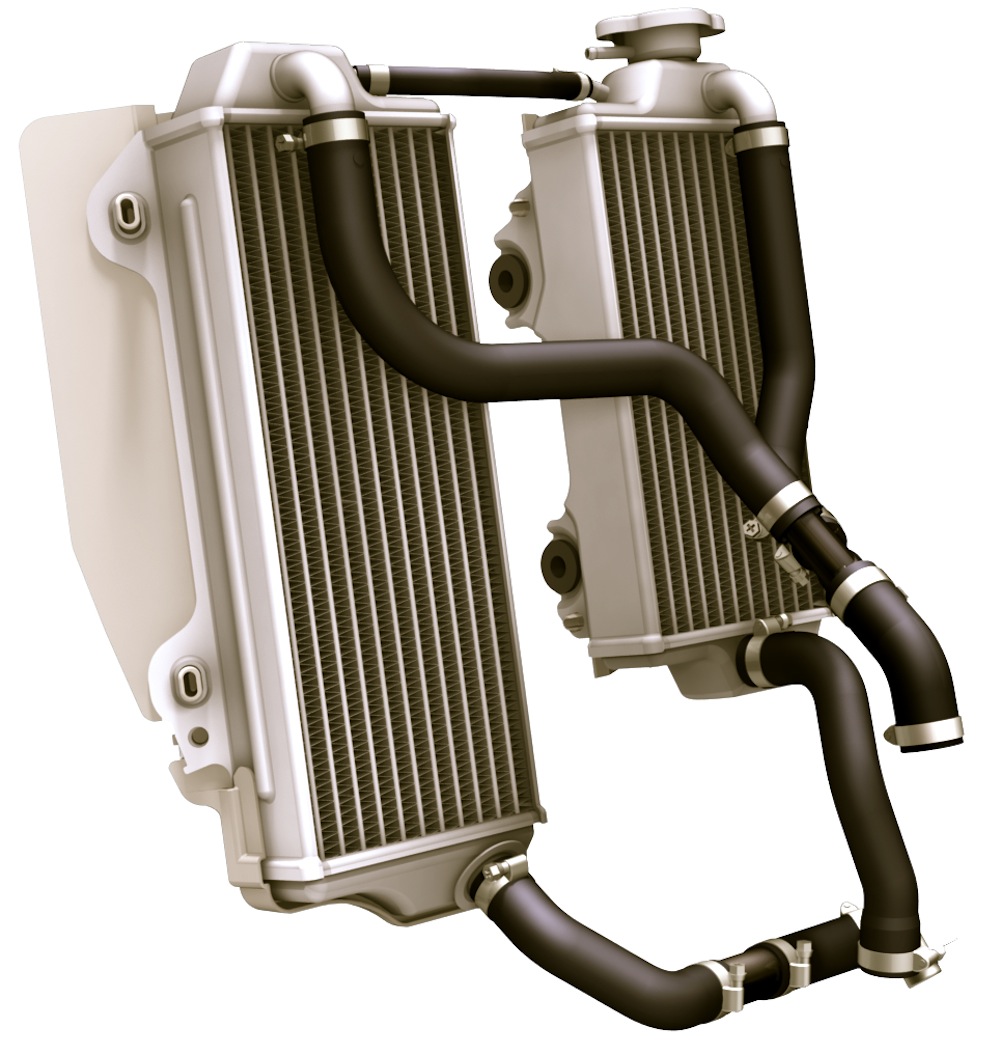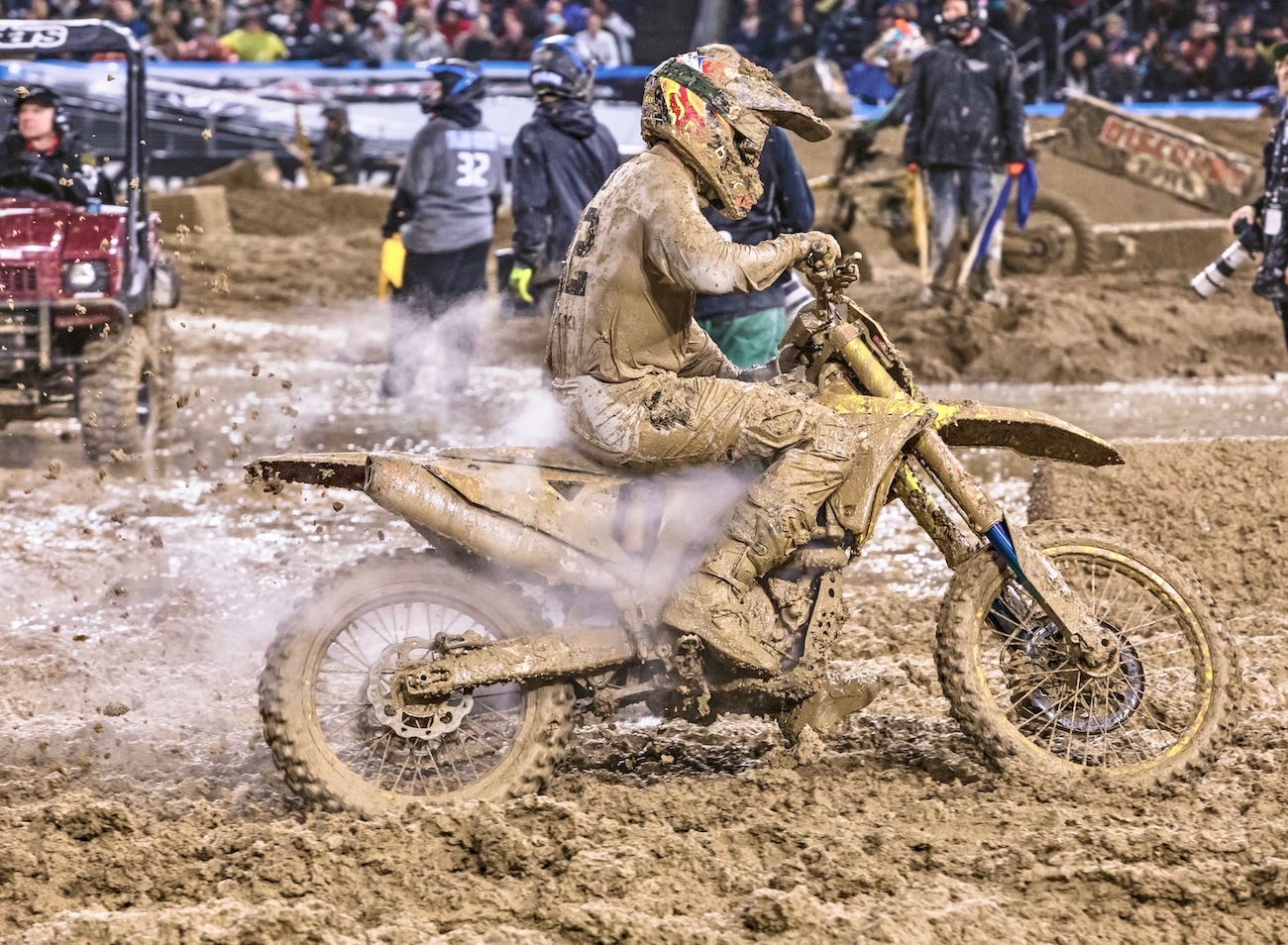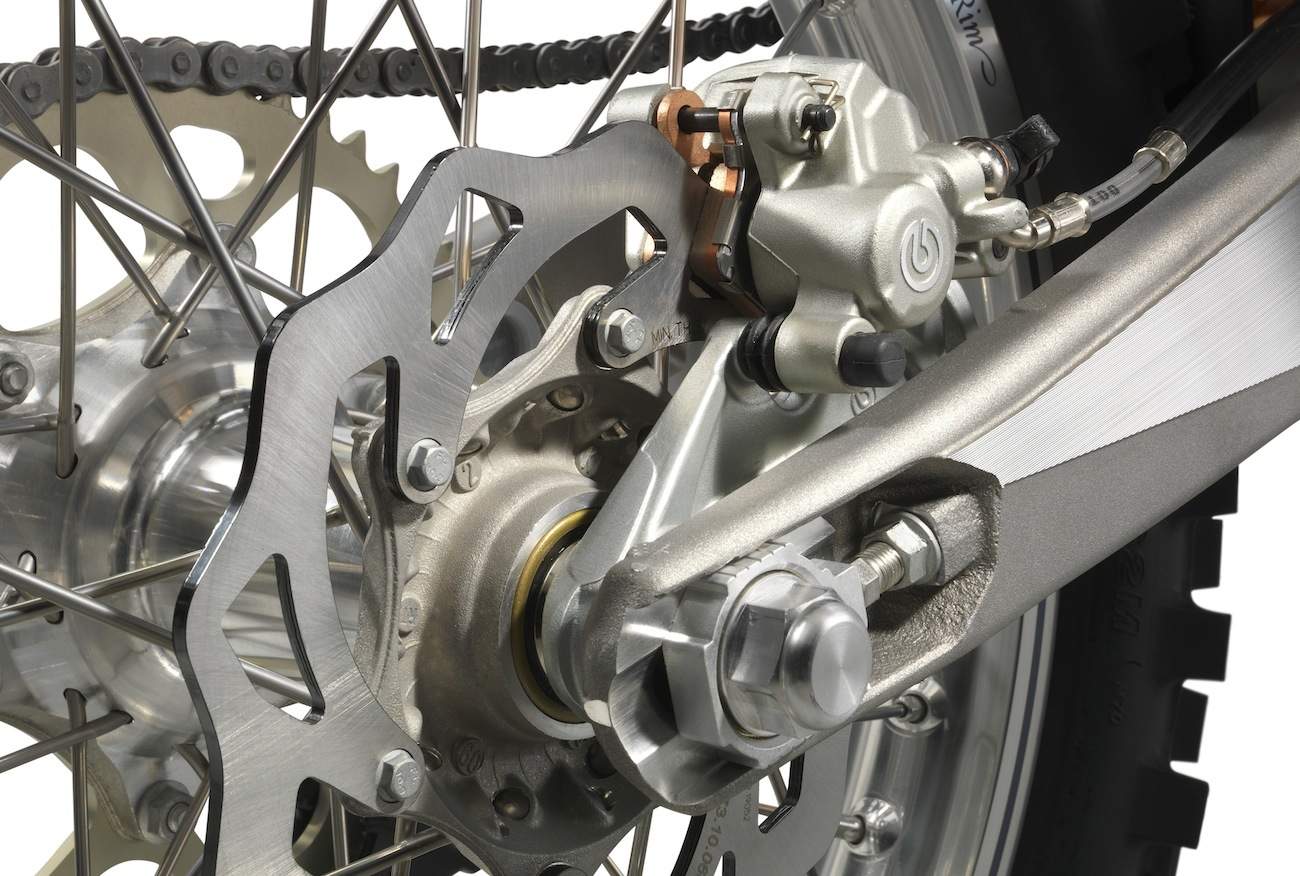TEN THINGS YOU NEED TO KNOW ABOUT HEAT BUILDUP
(1) Heat. Most guys focus on reducing weight, increasing horsepower and tuning their suspension when they want to go faster. But factory teams know that controlling heat can make a motocross bike significantly faster, perform better and make components last a lot longer. The byproduct of speed is heat. Heat is generated in the engine, radiators, tires, suspension components, brakes, oil and fuel—you gotta get rid of the heat to make more speed.
(2) Radiators. To get the most out of your radiators, be sure that air entering the radiators isn’t obstructed by dirt, bent fins or damaged louvers. Check that air doesn’t have an easier path around the radiators, but instead is forced through them. Finally, for air to blow through the radiators, it needs an unobstructed path to evacuate after exiting the radiators. Aftermarket radiators from companies like Myler’s and Fluidyne increase cooling performance by increasing the surface areas of heat-transferring components (between the water, cores and cooling fins), as well as using thinner materials with better heat properties. Plastic companies like make radiator wings, number plates and front fenders that seek to get more air through the radiators with vents and ducting. (3) Liquid. An aftermarket water-pump cover and impeller measurably reduce temperatures. Pro Circuit and Boyesen offer covers that improve circulation with better ducting and a more efficient impeller.
(3) Liquid. An aftermarket water-pump cover and impeller measurably reduce temperatures. Pro Circuit and Boyesen offer covers that improve circulation with better ducting and a more efficient impeller.
(4) Hoses. Increasing the radius of any sharp bends in the plumbing with a hose kit helps the liquid flow through the system, as does eliminating the bolt-on Y-junctions, which slows down water velocity. Some engine tuners get really tricky and increase the surface area between the water jacket and cylinder head. As for coolants and additives, they often make exaggerated claims, but special coolants do a good job.
(5) Combustion. A lean air/fuel mixture can make a bike run strong and crisp, but there will be a correspondingly high-exhaust gas temperature and high-cylinder head temperature. Using too low of a fuel octane rating can cause an uneven combustion burn, leading to hotspots in the cylinder and detonation. A lower-compression piston can reduce combustion chamber temperature, but if the engine has to work harder to produce the same amount of power in a given situation, it will have to run hotter to achieve that desired output. Boosting performance with a high-compression piston is fine, as long as you run appropriate octane fuel.
(6) Suspension. Compared to the forks, rear shocks are prone to overheating. Since the volume of oil in a shock is very small when the oil gets hot, its viscosity gets thinner, resulting in major shock fade.
(7) Fuel. Boiling fuel can cause vapor lock, which deprives the engine of the amount of fuel it needs, causing it to burble or stumble. All brands can suffer from this, but Suzukis are more prone to this than other brands. Many pros wrap their fuel lines with insulation and cover the underside of their fuel tank with a CV4 cover. SRS Performance makes a suitcase-sized fuel cooler that utilizes dry ice and an electric pump to circulate fuel through the tank or a gas can to get it cold before a race. Even placing a fuel can in a bucket of ice works for a short time.
(8) Tires. A spinning rear tire on hard terrain can produce so much heat during a moto that its air pressure can increase by up to 4 pounds. Friction between the inner tube and tire can exacerbate that heat buildup, so it’s important to make sure the tube and tire stay completely clean and dry during installation. It’s equally important that it stays clean and dry by not letting contaminents in through the rim-lock and valve-stem holes. A pressure washer can even blast water through spoke nipple holes. The factory-team solution to heat-induced tire-pressure gains is nitrogen.
(9) Brakes. Brakes are heat factories. On a fast track with heavy braking, front- and rear-brake rotor guards can block cooling air and cause overheating. LightSpeed offers a carbon fiber part that ducts air into the rear caliper. Good calipers are designed with insulated interfaces between brake pads and pistons. With larger rotors, brake systems don’t have to work as hard and don’t produce as much heat. High-quality brake fluid is offered with higher boiling points. For the most part, master-cylinder extenders that advertise resistance to brake fade are less than effective because of their distance from the heat source.
(10) Oil. Oil coolers are commonplace on factory bikes in the outdoor series because they really work. The factories often have unobtainable stuff, but Twin Air and Fluidyne offer good oil coolers for sale that the MXA wrecking crew has had success with on our test bikes. They simply route oil through metal heat sinks. It cools the oil via air flow, while increasing its volume. As for the oil itself, not all oil is created equal. Expensive full-synthetic engine oils, like Maxima’s Ultra4, work better at higher temperatures than old-fashioned petroleum oil. But while they slightly reduce friction in the engine, they also slightly reduce friction in the clutch (unless the tranny oil is separate — as on 2009-2016 CRF450s). Maxima’s Premium4 petroleum-based oil is preferable to clutch abusers. It still has some high-performance additives and is half the price of the Ultra4. Making sure the engine has the correct amount of oil is important. Low height makes the remaining oil work harder, get hotter and perform worse.









Comments are closed.